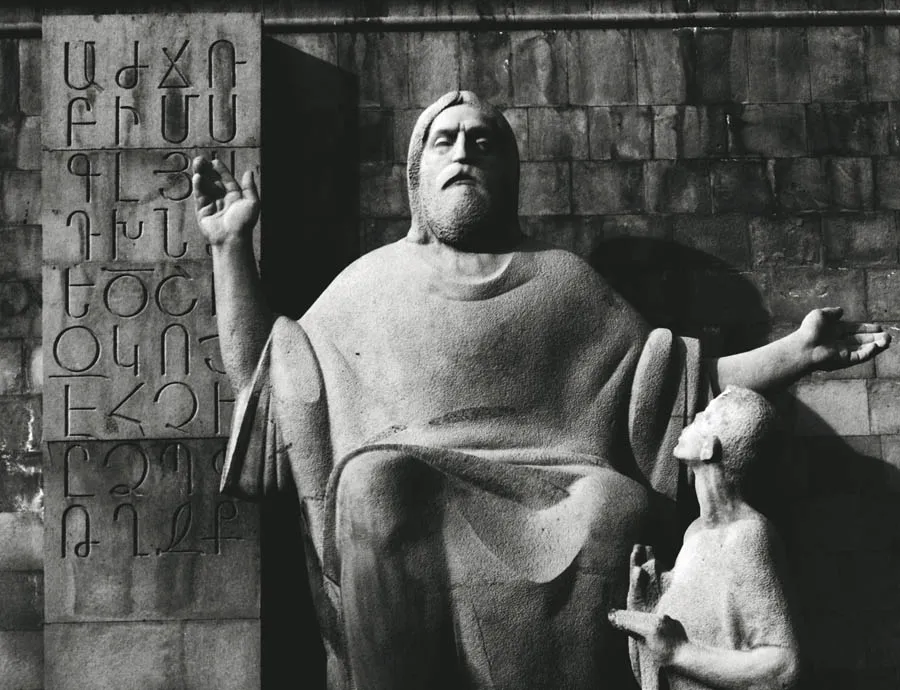
If you have an Armenian friend, then there is a high probability that his name is Armen. This is the most common name among Armenians in the 20th century. Previously, boys were also called that, but especially in the 20th century. The names Vardan, Hayk, Aram and others are also popular. Such names as Hamlet and Henry appeared at the turn of the XIX-XX centuries. They went from love to the theater. It was during this period that the theater, which had always been loved by Armenians, suddenly became even more popular. Troupes traveled to large cities. That’s when the generation of Macbeth and Juliet was born. By the way, there is also an Armenian female name, which was very popular in the first half of the 20th century. This name is Seda – that was the name of the ghost girl from the play “Old Gods”, the most popular play in Armenian theaters in the 10s. Now Sedas is not so much.
It was at this time, at the turn of the century, that the Armenians, however, like all European peoples, had big changes in their names. The thing is that the fashion for ancient history, for the study of the pre-Christian period, has begun. And people specifically studied old books in order to find for their children the most unusual names from forgotten antiquity. Everyone liked it very much and they gradually replaced the church names. So, now we have much fewer men with the names Mesrop, Karapet, Movses, Hambartsum, Hovsep, Yeprem, Hovakim, and once they were in the majority. Children began to be called the names of heroes and kings, as well as the old gods. That is why now among the Armenians there are more Vartans, Andranikovs and Garegins – the namesakes of the legendary commanders, Hayks – named after the progenitor of the Armenians, Aram, Tigran, Ruben, Levon, Ashot – in honor of the kings. Of the old names, the names Narek, Mher, Artashes are more often used. An interesting story is the popularity of the name Vigen, which is of Italian origin. But in the twentieth century, it became very common thanks to three Armenian writers who decided to name their sons that way. These are Avetik Isahakyan, Derenik Demirchyan, Levon Shant – in honor of one of the rulers of the city of Ani.
Girls were often called Anahit, as the mother goddess. Astghik is the goddess of love and youth. As for the popular names Karen and Karina, they are, of course, international, but they are very reminiscent of the old name of the city of Erzurum – Karin. Names such as Armen indicate nationality. In general, the nationalization of names took place among all Christian peoples – just now few people remember this.
In general, getting an Armenian female name is very simple. Take any you like, and add “ne” at the end. This is the pronoun “she” lost in the Armenian language. Marine instead of Marina, and it is already clear that this particular Marina is from Armenia. Finally, a few facts that will surprise you – about the sound of international names in Armenian. Well, the name Vasily in Armenian sounds like “Barseg”, and Lazar – “Gazar” or “Kazar”, here, in fact, a sound reminiscent of a garsed “r”. Poghos is Paul, Petros is Peter, Sarkis is Serge, Hovhannes is John, Matevos is Matthew, Gukas is Luka…
Such international names as David, Grigor, aka Grigory, Gevorg or George, Mikael, Samvel, Arman, Artur, Rafael are very common.
Women’s names have more preserved the Christian tradition: the most common of them are Anna and Mariam. The names of Saints Gayane and Hripsime are also very popular.
Today there are many sites that list Armenian names. If everything is more or less normal with male names, then where the compilers take female names from remains a mystery. In real life, you will hardly find happy owners of the names Tsiatsan or Imastui. Well, consider the names of women that you can meet in real life.
The Christian names that are found today include the name Nune – this is how the name of St. Nina, the baptist of Georgia, is pronounced in Armenian. But Aegine is Elena.
And also Shushan – she is Lilia, she is Susanna. By the way, Saint Shushan, the daughter of the Armenian commander Vardan and the wife of the Georgian prince, is revered in Orthodox calendars. There are a lot of “flower” names in Armenia, as is customary, however, all over the world. So, the name Hasmik – according to the Armenian name of the jasmine flower. Lala – poppy, Varduhi from the word “ward” – rose, Manushak – violet.
There is a version about the origin of the name Narine that it means “flame”. The name Anush is very old, and never went down in history, but after the opera of the same name appeared, it became very common. The name Lilith, by the way, is not Armenian, although it is very popular in Armenia – that was the name of the heroine of Avetik Isahakyan, who wrote his version of the Hebrew legend.
The names of Armine, Naira, Haykuhi, Hayastan, Biaina were given on a patriotic wave: they come from modern and ancient toponyms of Armenia. There are also not stylized, but purely geographical female names: Ani, after the name of one of the Armenian capitals, Araksia – after the name of the river, Tatev – a famous village. In the nineties, short melodic names became very popular: Mane, Shake, Nare, Syune. Of the “international” names in Armenia, Christina is very popular, often remade into Christine, Mary, Helen, Diana, Lusine. Once upon a time, the Greek variation of the name Diana was popular, but now it is extremely rare – this is the name Artemis, Artemis.
Plan your vacation in Armenia with us and you will be met by Ashot or Armen, or Hayk, or maybe Vigen himself.